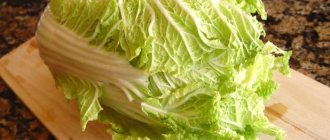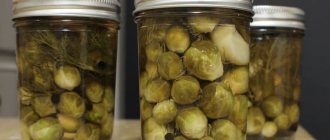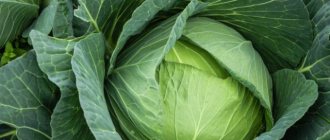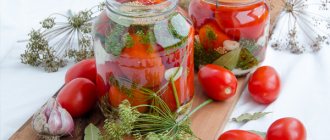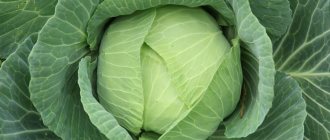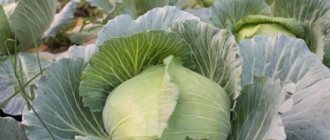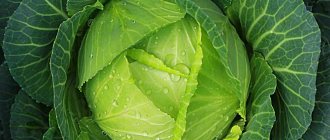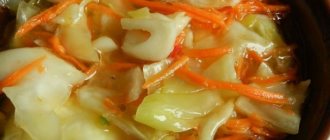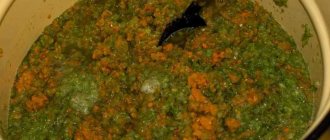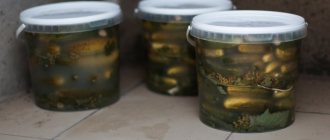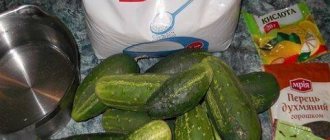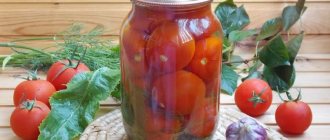If you want to prepare as much cabbage as possible for the winter, then it is better to immediately pickle the cabbage in a bucket. Of course, the ideal container for pickling is a wooden barrel, but getting it is not as easy as a bucket. And it takes up a fair amount of space and not every apartment can accommodate such a volume. In addition, the cost of wooden utensils is several times higher than that of ordinary enamel, and even more so plastic.
Is it possible to salt cabbage in a plastic bucket?
Of course, plastic buckets are the most accessible volume for making pickles, both in terms of cost and prevalence. They are durable and lightweight, come in a wide variety of shapes and sizes, and in recent years they have been used to package a variety of products, from dairy to fish. But during the fermentation process, acid is formed, which can interact with plastic. Therefore, it is important to understand that not every plastic bucket can be used to pickle cabbage in it.
You should not use colored plastic buckets for pickling, as they may contain various inappropriate impurities. It is better to use transparent or white ones, in which dairy products are most often sold. When purchasing a plastic bucket, you need to ask the seller for a certificate confirming the food use of the plastic from which the bucket is made.
How and where to cut a cabbage head
A wide and long chef's knife is suitable for cutting cabbage; it must be well sharpened. Sometimes they use a special cut for cabbage, but it cuts the leaves too finely and they are not very suitable for pickling.
You can find a shredder board, just remember that its knives are very sharp and can easily get hurt. Therefore, you need to learn how to use it and be extremely careful.
It is best to cut cabbage on a wide table or large wooden cutting board. The chopped leaves can be left here or poured into an enamel bowl, where we will mix all the ingredients.
There are several ways to cut cabbage. In most cases, the head of cabbage is cut in half and then chopped not too finely. You can also cut the cabbage into squares. There are ways to ferment quarters, halves and even whole heads of cabbage.
Shredded cabbage is combined with salt, spices, carrots and other selected ingredients. Mix thoroughly with your hands and leave for some time until the first juice appears.
Preparing the bucket
Experts and experienced housewives believe that in any case, the taste of cabbage pickled in a plastic bucket will not be as rich and attractive as if it were pickled in a metal or glass container. But metal is different from metal. To pickle cabbage, exclusively enamel buckets are used.
Attention! Do not use aluminum or stainless steel utensils for salting. The acid reacts with the exposed metal and the cabbage turns gray and unfit for consumption.
If you don’t have any other bucket at hand other than a plastic one, you can prepare it for salting as follows:
- The new bucket should be washed several times with soda, and then, filling it with water, leave it like that for 24 hours. Then dry it thoroughly in the sun. This recommendation, however, applies to any new dishes, including enamel buckets.
- To reduce the contact of salted vegetables with the walls of the bucket, you can line the inside with food-grade plastic or place a plastic bag inside.
- In any case, it makes sense to use a plastic bucket only for the pickling process. After the cabbage has fermented, it is better to transfer it to glass jars for storage.
If you use an enamel bucket for pickling, it is important to check that there are no chips on the bottom or walls. Otherwise, the workpiece may acquire an unpleasant taste and color.
Secrets and features of salting in a barrel
Sauerkraut is a unique product containing prebiotics and probiotics, where the former are responsible for the formation of human intestinal microflora, the latter are carriers of microorganisms. The positive results of eating this product include:
- improvement and stabilization of the gastrointestinal tract;
- strengthening the body's immune system;
- prevention of cancer, diseases of the cardiovascular system;
- prevention of obesity, diabetes.
The maximum nutritional value of pickled cabbage is achieved by following the following recommendations:
- Any white cabbage is suitable for seasonal pickling. But if you use early varieties, it will be soft and not crispy. The best option is represented by medium and late ripening varieties.
- Iodized salt excessively softens the leaf structure and imparts an additional undesirable flavor; only stone salt should be used.
- The properties of finished cabbage are practically the same if pickling is carried out in its own juice or using brine.
- Original taste and additional vitamins can be obtained with the addition of apples, berries, and beets.
- The aroma of cabbage will be enhanced by cloves, cumin and other seasonings.
Important! Salting cabbage is carried out in any container made of glass, wood, metal or plastic. But the best results are obtained by barrel salting.
Barrel preparation
The presence of an oak barrel determines the possibility of salting according to old classic recipes. But, first of all, the barrel should be prepared:
- After purchase, the barrel should be washed to remove small sawdust and debris. There should be no smell in the container.
- 2 weeks before the intended salting, the container must be soaked. Before the boards completely swell, leakage and “fogging” of the joints may occur. The swelling period does not exceed one day.
- Before adding cabbage, wash the lid, bends and the barrel itself with warm water. Check for foreign odors and, if detected, repeat the procedure.
- The quality of preparation of an oak container will be higher if steam treatment under pressure is used. This procedure will rid the wood of unnecessary microorganisms and odors.
In order to spend minimal time preparing the container before salting, you should ensure its proper storage. The emptied barrel is washed with hot water and soda and rinsed under running water. Dry, excluding direct sunlight, and store in the basement.
Important! There are several options for preliminary preparation of oak boards for assembling barrels. These should be checked with the seller or master cooper.
Rules for laying cabbage
The order of distribution of cabbage and placement of other ingredients necessary for pickling is presented as follows:
- A small amount of flour is distributed at the bottom of the container, which is covered with cabbage leaves.
- The next layer is cabbage.
- Sprinkle salt evenly and add carrots.
- The procedure is repeated until the barrel is filled, taking into account the space for raising the brine during fermentation, as well as the placement of pressure.
- Laying the next layer of cabbage is preceded by light compaction by hand or with a special pestle.
- The last layer is covered with cabbage leaves.
Before closing the lid, canvas fabric is laid, on top of which oppression is placed.
Important! Periodically “piercing” the contents of the barrel with a small diameter stick will ensure even salting of the cabbage.
The oppression is a wooden circle, the diameter of which is smaller than the neck of the barrel. Weighting agents are installed on top of it - household items or stones cleared of contaminants. A small saucepan with a heavy filling does a good job of this.
Salting technology
Cabbage is pickled in a bucket using a completely traditional technology, which has been preserved unchanged since the times when exclusively wooden barrels were used for pickling vegetables.
- A few of the outer most contaminated leaves are removed from the cabbage heads. The cleanest and freshest of them are placed at the bottom of a well-washed and dried bucket.
- Heads of cabbage are chopped into strips 3-5 mm wide using a sharp knife or modern devices in the form of a grater.
- Shredded cabbage is placed in layers, 4-5 cm thick, in a bucket. Each layer is sprinkled with a small amount of salt and compacted with a wooden pestle (pustle).
- The bucket is not filled to the very top, leaving about 5 cm from the top edge so that there is room for fermentation.
- The topmost layer of cabbage is also covered with large, washed cabbage leaves. A double layer of gauze, previously scalded with boiling water, is placed on top of them.
- A wooden circle, slightly smaller than the diameter of the bucket, is placed on the gauze, and a load in the form of a stone or a jar of water is placed on it.
Comment! Since a load with a wooden circle underneath must be constantly covered with the oozing cabbage juice, limestone, brick, sandstone, slate or a cement product cannot be used for these purposes. - The bucket of pickled cabbage is left warm, usually at room temperature +18°+23°C. These are the most favorable conditions for fermentation. At lower temperatures, the process is greatly slowed down, and if it is too warm, the cabbage can quickly sour, soften and spoil.
- The beginning of the fermentation process can be determined by the foam that begins to stand out and which must be periodically removed.
- Twice a day, vegetables must be pierced with a long stick to release gases so that it reaches to the very bottom if possible.
- The salting process can be considered complete when the foam completely ceases to stand out, the brine becomes lighter, and the cabbage acquires a refreshing sour-salty taste and a pleasant crunchiness.
- If the cabbage still tastes a little fresh, then it needs to be given a few more days to ferment.
After completing the process, the finished dish must be placed in a cold place and ensure that it is constantly covered with brine.
Secrets of delicious cabbage
To make the cabbage crispy, use the following tricks::
- after adding salt, there is no need to knead the chopped vegetables, just carefully mix all the ingredients;
- cabbage is cut into medium-sized pieces;
- To prevent vegetables from becoming soft, add horseradish root or oak bark, which contain tannins;
- First, the cabbage is fermented at room temperature, then the container is moved to a room where the temperature is 0°C;
- when placing vegetables in a container, you need to compact them well, then place a load on top;
- It is not recommended to refreeze vegetables before use.
The following steps will help improve the taste of pickled vegetables::
- during the fermentation process, you need to remove the foam;
- regularly pierce the vegetables with a wooden stick (for uniform fermentation and release of gases);
- add cucumber pickle or sour fruit juice.
The shelf life of products can be extended if a number of conditions are met.:
- jars or other containers are left in a cool place at a temperature of +1°C;
- Using a cloth soaked in alcohol to cover the cabbage will help avoid mold.
Cooking recipes
In a bucket, cabbage can be pickled either according to the classic recipe, which uses nothing but cabbage, carrots and salt, or with a variety of additives in the form of spices, vegetables and berries.
Classic version
In the classic recipe, cabbage is salted in compliance with the following proportions:
- 10 kg cabbage;
- 200 g salt;
- 200 g carrots.
These proportions have been used in cooking for several hundred years, which is why the recipe is considered a classic.
Usually cabbage is pickled in a bucket using the technology described above. But housewives are often faced with the fact that they seem to be doing everything correctly, but the taste and consistency of pickled cabbage are far from perfect. The workpiece does not release enough juice and is not crispy at all. Most often, this is due to unfavorable growing conditions for cabbage - the vegetable simply does not absorb enough juice, and from the outside this has practically no effect on the heads of cabbage.
Attention! Sometimes this situation arises when using the latest varieties of cabbage, such as Amager, for pickling - immediately after harvesting, they are not very juicy and can taste bitter.
In this case, a slight improvement in the classic salting technology can help.
The shredded cabbage is simply placed in a bucket, and then carefully poured with the brine prepared in advance so that it is completely covered with it.
To prepare the brine, dissolve 250-300 g of salt in 5 liters of water. Salt can be dissolved faster and more reliably if the water is preheated to 100°C. The resulting brine must be cooled to room temperature before pouring.
Important! In any case, place a weight on top, because during the fermentation process the cabbage will tend to float to the top of the bucket.
Otherwise, you should proceed according to the manufacturing technology described above.
With lingonberries and cranberries
It is very tasty and healthy to pickle cabbage in a bucket with cranberry and lingonberry additives. Both of these berries contain benzoic acid, a substance that has excellent antiseptic properties, which further prevents the development of harmful microorganisms, especially during the initial period of fermentation.
According to the recipe for a standard 10-12-liter enamel bucket, you need to prepare:
- 10 kg cabbage;
- 200 g carrots;
- 200 g cranberries;
- 200 g lingonberries;
- 200 g salt.
You can pickle cabbage with berries either using traditional dry salting or adding brine. Vegetables and berries are placed in a bucket in layers; it is not recommended to press them down too much. The last layer should be cabbage, and on top, as usual, everything is covered with large cabbage leaves.
With bell pepper
Using bell peppers gives the salted cabbage an extra sweet and spicy kick. In addition, according to this recipe, the preparation is supplemented with spices, which, in addition to taste, contribute to better preservation of the finished product.
The following ingredients should be prepared:
- Several heads of cabbage with a total weight of 10 kg;
- 500 g sweet bell pepper;
- 200 g carrots;
- 200 g salt;
- 1-2 teaspoons of cumin or dill seeds;
- 15 black peppercorns;
- 10 peas of allspice.
Cabbage is pickled in a bucket using the technology described above. Sweet peppers for adding to pickling are peeled from seeds and cut into strips.
Selection of ingredients for fermentation
How to ferment cabbage in a plastic bucket? First you need to choose the right white vegetable and other components that will be added during pickling.
Variety selection
No less pressing is the question of what cabbage to ferment. Medium and late ripening varieties are best suited for this purpose . Such heads of cabbage are distinguished by their increased density, and when salted they produce a crispy and hard snack. Their ripening occurs in mid-autumn, so this is the best time for pickling.
Important! Early cabbage is always loose and soft. When it is fermented, the result is more like porridge.
Large heads of cabbage are chosen for fermentation to minimize waste . However, you can use several small heads of cabbage. When choosing cabbage, you need to pay attention to the presence of green leaves. If they are missing, then there is a high probability that the vegetables were frozen. As a result, it lost its marketable appearance, and the seller removed these leaves.
, which taste sweetish, are best suited for fermentation If red-headed varieties are used, the appetizer takes on a bitter aftertaste. Adding sugar will help correct the situation.
The most suitable varieties for pickling are Aros, Slava, Morozko, etc. It is quite simple to identify late heads of cabbage: they are large in size and high in density, have coarse and thick leaves.
Selection of seasonings and additives
The main additive that promotes fermentation is salt . If vegetables are fermented without salt, then spices are used. This snack has a specific taste and does not last long.
If not enough salt is used, the vegetables become loose . Excess salt also negatively affects the taste of the products and increases the duration of the entire process. Cabbage is fermented using coarse rock salt.
Attention! The optimal ratio is to add 0.2 kg of salt for every 10 kg of vegetables.
To speed up the fermentation process, sugar is added to the preparations . With its help, vegetables acquire a mild taste. If you overdo it with sugar, they will become too soft.
Bay leaves and allspice help improve the taste of sauerkraut . These components are present in almost every recipe.
You can add other seasonings to the cabbage to taste.:
- caraway;
- anise;
- hot peppers;
- carnation;
- Dill seeds.
Various vegetables, berries, fruits and herbs are used as additives:
- bell pepper;
- celery;
- cranberry;
- cowberry;
- apples;
- mushrooms;
- fresh cilantro and dill.
This is interesting: Sweet and sour cabbage: recipe for pickled appetizer
To change the color, many housewives add sliced beets to the cabbage or add its juice. All vegetables or fruits in sauerkraut must be cut into strips.
Terms and conditions of storage
You can store cabbage pickled in a bucket in the cellar, on the balcony, loggia, or even in the refrigerator if you first put it in three-liter jars. It is only necessary that the storage temperature be in the range from 0° to +5°C.
There are also more exotic ways to store pickled cabbage: it can be frozen and rolled into jars after preliminary sterilization. But the taste and consistency of the resulting product will, of course, be different, not so juicy and crispy.
Recipe for sauerkraut with lingonberries (cranberries)
Chop 10 kilograms of cabbage, add 400 grams of carrots cut into strips, add salt (50-100 grams) and mix thoroughly.
Pour the mixture into a container, compact each layer and sprinkle with lingonberries (cranberries). In total you will need 700-800 grams of berries. The last layer should be cabbage. Cover with a cabbage leaf, cloth, plate and place pressure.
Every day, carry out water procedures for oppression and fabric, pierce the cabbage with a stick and collect excess foam. This recipe is suitable for sauerkraut with apples or pumpkin.
Cabbage pickled in its own juice is not only nutritious, but also very healthy. It contains vitamins B and C, which are stored for a long time. Don't be afraid to ferment cabbage. The suggested recommendations and secrets will eliminate mistakes, and the cabbage will turn out very crispy and aromatic.
Cabbage is rich in fiber, microelements, and vitamins necessary for the normal functioning of the body and its functioning. When stored for a long time, the ingredient begins to lose its healing properties, and it is not always possible to buy it regularly in winter. The fermentation process will help preserve all nutrients. The vegetable can be used as a filling for baking, used as an ingredient in salads, as well as in second and first courses. We suggest considering the old proven method of fermenting cabbage for the winter in a bucket.
Cold sourdough method with salt brine
Crispy cabbage, known to everyone since Soviet times, was prepared in production according to this recipe. The taste is amazing, and the vegetable itself is juicy, crispy, with a characteristic sourness.
The dish is prepared according to the following recipe:
- You need to remove the top leaves from the cabbage and chop the head of cabbage.
- Add spices to the vegetable - salt, a little cumin or dill seeds, pepper. Crushing the product according to this recipe is prohibited.
- Then everything is laid out in a bucket and filled with brine, which is prepared from salt, granulated sugar and water. Regular table salt is used - extra and iodized salt is not suitable for sourdough.
To do this, the water is first boiled, salt is added, and after cooling, the pouring is used to pickle the vegetable.
During cooking, the cabbage must be stirred to remove accumulated gases or pierced with a knife. Upon completion of the fermentation process, the vegetable is placed in small containers (optional) and sent into the cold.
We prepare whole cabbage for the winter
The vegetable can be fermented with whole heads of cabbage. A plastic barrel is suitable as a container. At first glance, it may seem that the cooking process is complicated, but any housewife can handle it.
For detailed instructions, see the following video:
These are the ways you can use to stock up on tasty and healthy snacks for the winter. Today, buying a wooden barrel is not difficult. It is sold in specialized stores. But plastic containers are also suitable for pickling vegetables.
